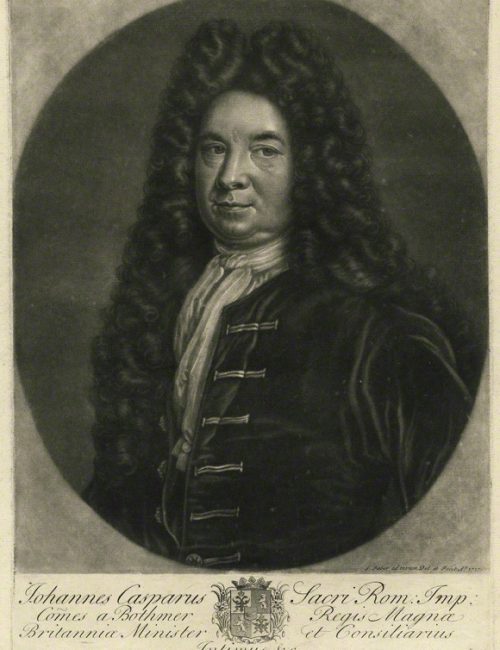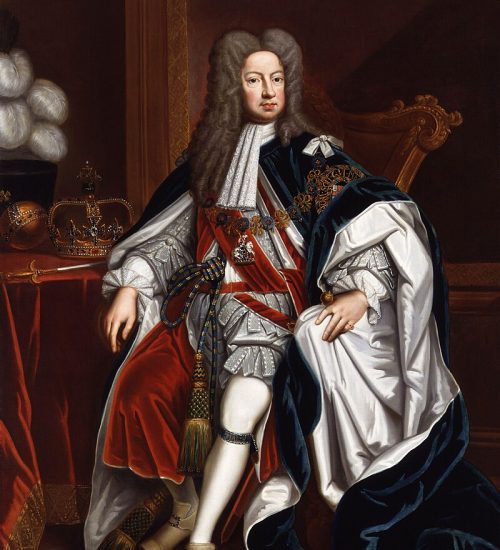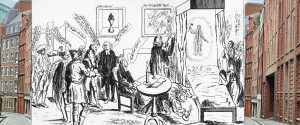Hans Caspar von Bothmer: Diplomat, Courtier, and Architect of Power at Downing Street
Hans Caspar von Bothmer’s story at Downing Street is one of diplomacy, ambition, and frustration. As the Hanoverian envoy to Britain from 1701, he played a decisive role in securing the Hanoverian succession, shaping the future of the monarchy, and transforming Downing Street into a hub of international politics. Yet alongside his remarkable influence came an enduring complaint—his Downing Street home was plagued by leaks, damp, and crumbling plaster.
Bothmer Moves to Downing Street
Born in 1656, Hans Caspar von Bothmer arrived in London as Hanover’s envoy just as questions of succession unsettled the English crown. The Act of Settlement in 1701 confirmed that only Protestant heirs could inherit, and Bothmer worked tirelessly to advance the interests of his master, the Elector of Hanover. His political manoeuvring laid the groundwork for George I’s eventual accession.

By 1720, Bothmer was living in a house on Downing Street—an address that, at the time, was not yet the iconic Number 10. His occupation preceded Robert Walpole and future prime ministers, making him one of the earliest figures to link Downing Street with international power.
Centre of Diplomatic Power and Hospitality
Bothmer was more than an envoy. He became chief adviser to the Hanoverian family, turning his Downing Street residence into a diplomatic hub.
The house echoed with the voices of nobles, ministers, and foreign envoys. Stables held his prized horses, a clear sign of wealth and refinement. Inside, his salons became famous for cosmopolitan gatherings, where politics blended seamlessly with entertainment. Bothmer’s hospitality placed him at the centre of London society and reinforced Hanover’s growing influence in Britain.
The Hanoverian Succession
The defining moment of Bothmer’s career came in 1714. When Queen Anne died without heirs, Britain faced the threat of a Jacobite restoration. Bothmer’s years of careful relationship-building with Whigs and moderates proved invaluable.

His influence ensured that George I of Hanover succeeded peacefully, avoiding bloodshed and securing the Protestant succession. For this, Bothmer earned the reputation of a “kingmaker.” His London residence became synonymous with this turning point in British political history.
Grand Entertainments and Political Scheming
Life at Downing Street under Bothmer was far from austere. He supported the Royal Academy of Music, helping bring celebrated composers such as Handel to London. Music, conversation, and intrigue flowed together in his salons, where policy was shaped over performances and elegant dinners.
In this way, Bothmer embodied the early 18th-century diplomat: equal parts strategist, courtier, and cultural patron.
Architectural Grievances and Everyday Reality
Despite the glamour, Bothmer had constant complaints about his Downing Street house. The speculative building programme overseen by Sir George Downing left shallow foundations, thin walls, and leaky roofs.
Letters reveal Bothmer’s frustration with draughts, dampness, and crumbling plaster. His criticisms foreshadowed a long history of maintenance issues at Number 10, a problem that has persisted for centuries and irritated generations of occupants.
Hans Caspar von Bothmer died in 1732, but his legacy endures. His Downing Street residence became the official home of the British Prime Minister, ensuring his place in political history.
He shaped the Hanoverian succession, secured Britain’s monarchy, and fostered a vibrant cultural scene in London. Yet his constant quarrel with the poor quality of Downing Street’s architecture is just as memorable, highlighting the curious mix of grandeur and discomfort that has always defined the famous address.
Hans Caspar von Bothmer’s time at Downing Street was marked by both brilliance and inconvenience. He orchestrated one of the most significant dynastic transitions in British history, secured the throne for George I, and cultivated London’s diplomatic and cultural life. At the same time, he endured leaking roofs, damp walls, and endless repairs.
🎧 Listen to London History Podcast Episode 139: Downing Street – A Microcosm of London and learn more about the former residents of Downing Street.
📚Related Blog posts:
- The Hanoverian Succession: Dynastic Politics and Monarchical Culture edited by Michael Schaich et al. (Routledge, 2024)
- 10 Downing Street: The Illustrated History by Anthony Seldon (1999)
- The Great Man: Sir Robert Walpole by Edward Pearce




